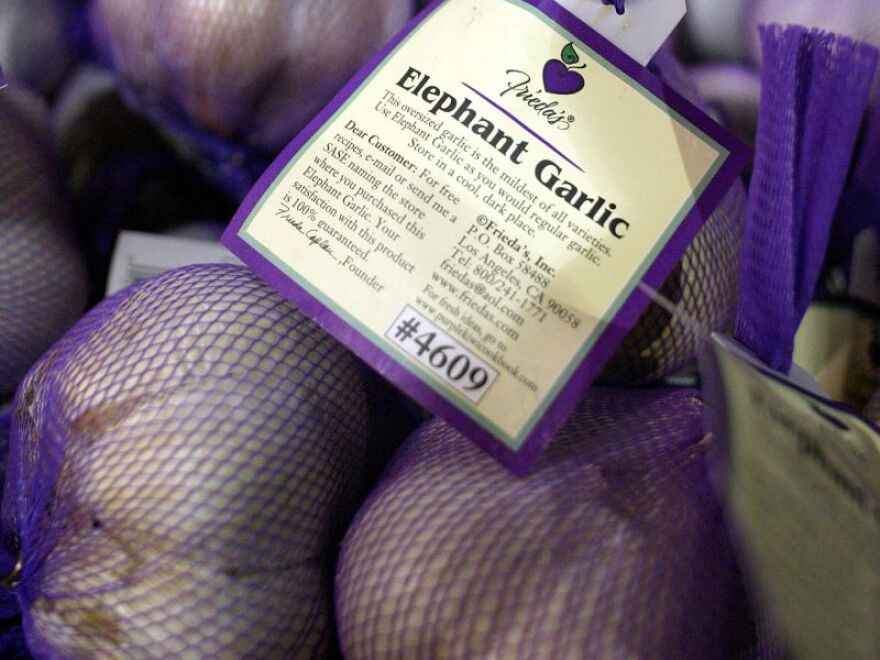When the calendar turns to October, it's garlic planting time. While many of us know of hardneck and softneck garlics, there are some unusual garlic relatives that are also planted now.
Elephant garlic is a bit misnamed. It's more closely related to leeks, but grows like garlic. It produces enormous bulbs (hence the elephant name) that are twice the size of the largest, regular garlic. With large cloves as well bulbs, you might think it would be too much garlic flavor in the kitchen. But elephant garlic's taste is so mild that you can even eat it raw in salads. It has just a hint of garlic flavor so is a good substitute for those seeking a tamer taste. Plant elephant garlic as you would regular garlic and protect it in winter with a thick layer of hay mulch.
Another allium is a mover and shaker. Egyptian onions are also called winter onions, tree onions or walking onions. This perennial onion can grow 2 to 3 feet tall. It forms a topset of bulbs on the top of the leaf stalk. When heavy enough, the topset tips over, contacting the ground and rooting. Over time it looks like the plant is walking across the garden. You can harvest and eat the shallot-sized bulbs in the soil (being sure to leave some for next year), the green leaves, and the small topsets themselves. This onion's flavor is stronger than a normal onion. The best part is you'll have them each year in the garden without replanting. To keep them under control, harvest the topsets, even if you aren't using them.
And now for this week's tip, it's time to sow cover crop seed. A cover crop mix of a legumes, such as hairy vetch, and grains, such as oats or winter rye, is best. Prepare the bed as you would for planting any crop. The cover crop will grow this fall holding the soil in place and add valuable organic matter when turned under next spring.
Next week on the Vermont Garden Journal, I'll be talking about squirrel proof bulbs. Until then, I'll be seeing you in the garden.
Broadcast on Friday, October 3, 2014 at 5:57 p.m. and Sunday, October 5, 2014 at 9:35 a.m.
The Vermont Garden Journal with Charlie Nardozzi is made possible by Gardener's Supply, offering environmental solutions for gardens and landscapes. In Burlington, Williston and Gardeners.com.
Resources:
Egyptian Walking Onion
Elephant Garlic





